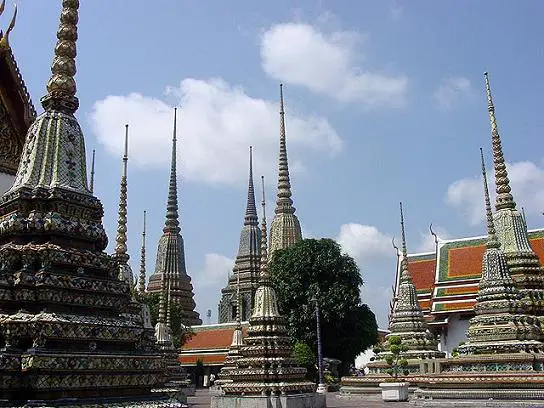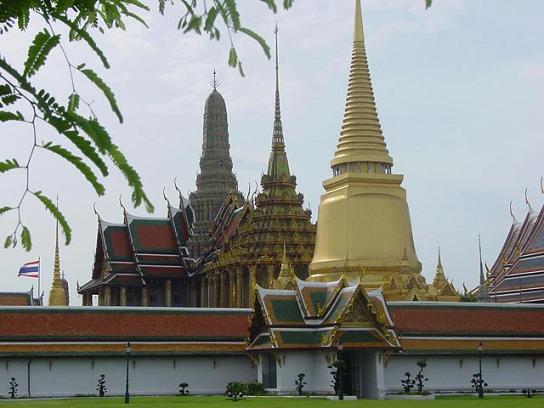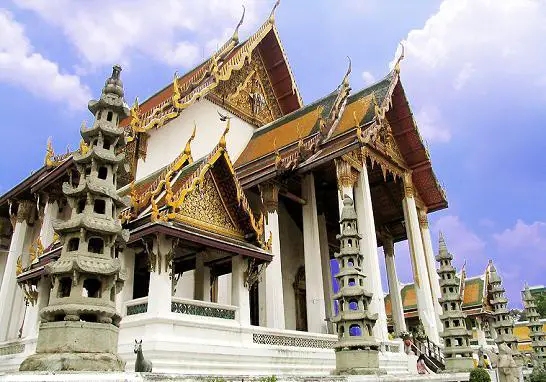
Wat Traimit in Bangkok is well worth visiting as it is here where local Chinese residents come to worship an enormous Golden Buddha even though the image has nothing to do with China’s spiritual heritage. They simply make merit by rubbing a little gold leaf on the smaller Buddha images within the temple ground. Rather fitting for a community closely linked with the gold trade.
The 18 carat solid gold seated Buddha image that you see settled in the splendid interior of the temple is said to be the largest of its kind in the world. This huge stucco figure sits some 4.5 metres (15 feet) tall and weighs more than 5 tonnes.
The Big Buddha was discovered by accident in 1955 at a nearby riverside temple when construction was conducted to extend the dock in the vicinity, but it is thought to have been made during the 13th century Sukhothai period and rested undetected for centuries in an Ayutthaya temple until the 19th century.

A Brief History of the Golden Buddha
Between the 14th and 18th century, Ayutthaya was persistently invaded by Burmese armies, who in fact had completely and irreparably destroyed the city. To prevent and preserve the golden statue from being detected, it was covered with a plaster cast in the hope of concealing its true composition. And it worked.
During the 19th-century the Buddha was brought to a temple in Bangkok where it was kept complete in its original plaster cast until 1931. Thereafter, it was moved to a temporary shelter on the grounds of the Wat Traimit Temple where it remaindered for more than 20 years before a crane dropped it from its sling during a move to its present permanent place.
To everyone’s dismay, the Buddha crashed to the ground, revealing a hint of gold from a crack sustained during its fall. Because the rain-soaked plaster was wet at the time, it became flaccid and thus easily broke.

Getting to Wat Traimit Temple
Wat Traimit is situated on the eastern edge of Chinatown on a triangle of land close to where Yaowarat and Charoen Krung roads meet. Nearby is a traffic circle dominated by a huge symbolic Chinese gate marking the entrance to Chinatown. You can arrange to tour the area before or after viewing the temple.
The best way to get here is by taxi, but if you are the adventurous type, take the Chao Phraya River Boat Express to Ratchawong Pier and then a Tuk Tuk from there. It is also within walking distance from Hualamphong Railway Station.
To get to the temple compound from the station, simply cross over the canal beside the station and walk along what is known as Thanon Tri Mit Road for about 200 metres.
If you’re just wanting to see the Golden Buddha, the entrance fee is 40 Baht, but if you also want to view the temple’s museum, then an additional fee of 100 Baht is required. Tickets can be purchased on site. The temple housing the Buddha is open daily from 8:00 am until 5:00 pm. The museum is closed on Mondays.











